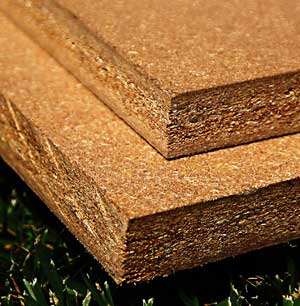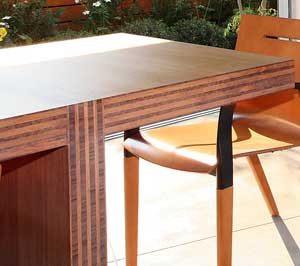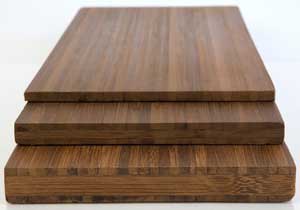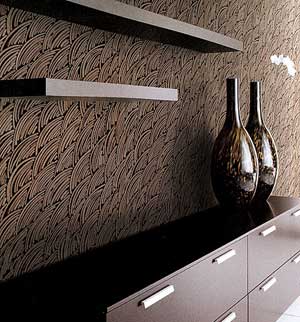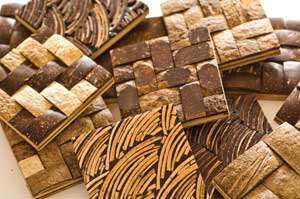
What’s an avid surfer with a background in advertising and copywriting to do when he’s not hanging ten? Well, if it’s 2003 and you’re eco-conscious John Stein, you’re starting a company called Kirei USA with the intent of creating decorative building products that are both environmentally friendly and stylishly smart.
John set his sights on low-impact building products when a friend introduced him to a sorghum-based composite board originally offered by a Japanese company. John bought that company and renamed it Kirei—which is a Japanese character that translates to “clean, beautiful.” John felt the name fit the company’s business philosophy well, because its aim would be to help designers and architects create elegant interior spaces using sustainable, natural, nontoxic materials.
In the early days, John took samples of the sorghum-based Kirei Board to trade shows and literally passed them out from his backpack. He didn’t even have a booth. But it didn’t take long for Kirei Board to catch on as a unique alternative wall paneling. (Learn more about Kirei Board in eZine issue 234’s “What’s In Store,” found through the Archive button.)
Since then, Kirei USA has added more novel building materials to its expanding product line. All are manufactured from renewable or reclaimed agricultural byproducts. For instance, Kirei WheatBoard is a sheet good product intended to be an eco-friendly substitute for MDF or particleboard. It is made from wheat stalks left over after the edible portion of the plant is harvested, using a no-added-urea formaldehyde adhesive that has zero VOCs. The material is available in 4 x 8-ft. sheets in 1/2- or 3/4-in. thicknesses. The company’s spec sheets say that it has similar working characteristics and end uses to the wood-based sheet materials it replaces. WheatBoard sells for around $1.50 per square foot.
In 2005, Kirei added various bamboo-based building materials to the product line. Bamboo sheet goods are one option. They are made in 4 x 8-ft. panels and come in three face-grain styles: horizontal, vertical or a variegated “zebra” pattern. Core composition of the sheets ranges from solid bamboo to two- or three-ply variations. The bamboo panels are intended to replace hardwood plywood, and they are available in 1/4-, 1/2- and 3/4-in. thicknesses. Prices range from around $7 to $16 per square foot. The material can be machined and finished like cabinet-grade plywood.
Kirei also offers bamboo sheet veneer, edge tape and 1-1/2-in.-thick countertop. Colors range from natural to carbonized to a new chocolate hue. Similar to WheatBoard, the Bamboo product line is made from low- or no-added formaldehyde MDI adhesive. And, since bamboo has a rapid growth cycle, it results in a higher yield per acre than tree planting, so it’s rapidly renewable.
New last year are Kirei’s Coco Tiles, which are made from the reclaimed outer shells of coconuts. Often these shells are considered waste products that are discarded or burned after the edible portion is harvested. Instead, Kirei applies strips of the shells to a sustainably harvested plywood backer using low- or no-VOC resins to create 12 different surface textures and styles. Coco Tiles are offered in 12-in.-square tiles or 4 x 4-ft. panels. They’re suitable for wall coverings, cabinetry, furniture construction and other vertical installation applications. Prices range from $25 to $45 per square foot.
Evidently, Kirei’s decidedly “green” approach to building materials is gaining momentum. Company sources tell me that these products have been used for interior designs and displays in select locations of several major corporations, including Starbucks, Kroger, McDonald’s, Whole Foods Market, Nokia and REI, to name a few. We woodworkers can incorporate Kirei products into our DIY home and shop projects, too. The company has a nationwide network of distributors and retailers, and you locate them on Kirei’s website. You can also obtain specs sheets and product application suggestions on the site.
According to company literature, “John wants Kirei to be the product that lures people into thinking and participating in environmental changes…(he) wants owners to get that buzz that comes from doing something ‘green’ and to have the realization that they could easily incorporate other alternative products into their lives such as water-saving devices, hybrid cars and other home-building products that use recycled materials.”
